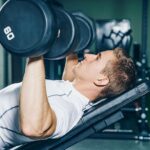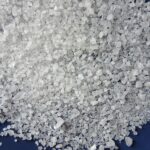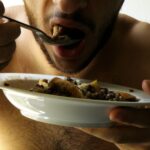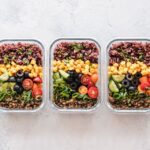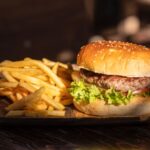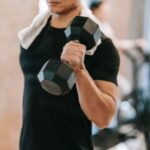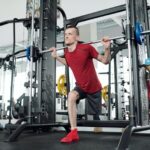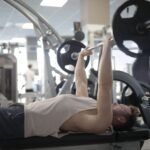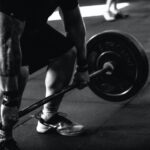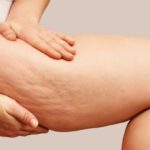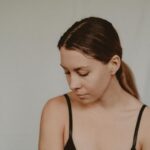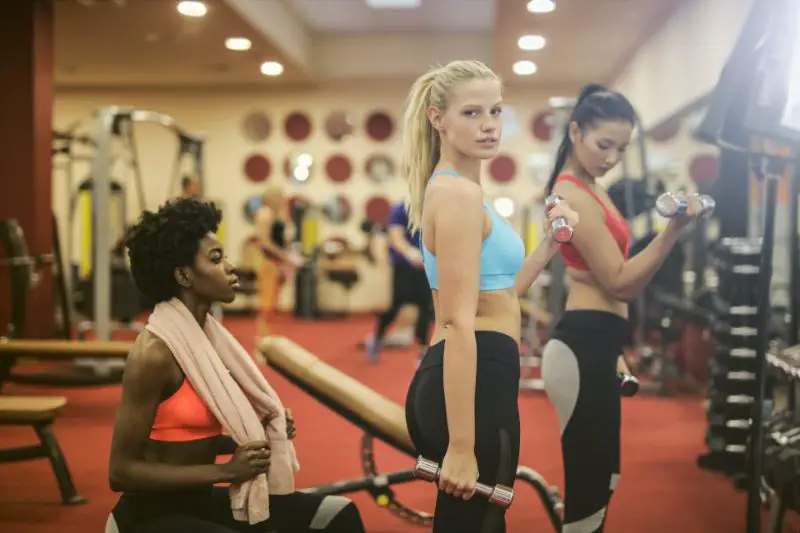
A journey towards fitness is incomplete without considering two critical aspects – weight loss and lifting weights to lose fat. Understanding your diet’s significant role is paramount to flourish in this journey.
This article aims to enlighten you on what to eat when lifting weights to lose weight. We’ll delve into the specifics of incorporating healthy, nutritious foods into your diet while concurrently working towards building muscle and burning fat.
Table of Contents (click to expand)
Understanding the Concept: What to Eat When Lifting Weights to Lose Weight
People often harbor various misconceptions when it comes to dieting and lifting weights. One common fallacy is that slashing calories from fat-burning your diet is the one-stop solution to weight loss.
While maintaining a calorie deficit is a crucial part of the weight loss equation, it is not the sole component. Balancing your calorie intake with your energy expenditure is equally essential, especially when engaging in weight training. We’ll now unravel this intricate balance.
The Role of Macronutrients in Weight Loss and Weightlifting
Addressing the topic of weight loss and weightlifting, it’s impossible to ignore the integral role of macronutrients. Proteins, carbohydrates, and fats form the foundation of your diet and have unique functions.
For instance, proteins are essential for building muscle mass and fostering weight loss. Carbohydrates serve as the primary energy source, fueling your weight-lifting workouts. Healthy fats, often overlooked, are vital for hormonal balance and maintaining overall health.
Essential Proteins for Weight Loss and Weight Lifting
Proteins are the backbone of your muscles. These are responsible for muscle recovery and rebuilding after a strenuous strength training workout, making them a must-have in your diet post-workout afterward.
Lean protein sources like chicken breast, lean beef, and Greek yogurt are excellent choices for animal-based proteins; legumes, lentils, and quinoa are ideal for plant-based proteins. Consuming protein-rich foods can also assist in satiety, helping you curb overeating and unwanted weight gain.
Carbohydrates: Energy Providers
Carbohydrates are your body’s primary fuel, especially in energy-intensive activities like lifting weights. They replenish glycogen stores in your muscles, making them essential to your diet when raising or wanting to lose weight.
It’s crucial to opt for complex carbs, like sweet potatoes, whole grains, and brown rice, over highly processed foods like white bread. These nutrient-dense carbs provide sustained energy and contribute to a healthy digestive system.
The Importance of Healthy Fats When Lifting Weights to Lose Weight
Don’t be swayed by the negative connotation associated with “fats.” Healthy fats are integral to your diet. They aid in absorbing fat-soluble vitamins, help regulate inflammation, and serve as a concentrated energy source.
Choose healthy fats from fatty fish, olive oil, and avocados. These healthy fats aid in promoting weight loss, reducing bad cholesterol, and don’t contribute to weight gain like the empty calories from processed foods.
Building Your Plate: Foods to Eat When Lifting Weights
Creating a healthy, balanced diet might seem daunting, but it doesn’t have to be. A good rule of thumb is to fill half your plate with a colorful variety of fruits and vegetables for fiber and essential micronutrients.
Then add a portion of lean protein for muscle repair and growth, and include complex carbs to fuel your muscle gain and workouts. As far as possible, avoid processed foods, often high in unhealthy fats and sugars, and focus on whole foods instead.
Hydration: An Underrated Aspect of Weight Loss
Hydration plays a significant role in weight loss and overall health. Drinking plenty of water aids digestion, helps control calorie intake by promoting a feeling of fullness, and is essential for muscle recovery post-strength-training workout.
Although water needs vary, a general guideline is to aim for at least 8-10 glasses per day or more if you are highly active.
Burn Fat with the Right Foods and Exercise
Consuming and pairing the right foods with a comprehensive workout routine can help you burn more calories and fat. Certain foods, such as lean proteins and complex carbohydrates, can help boost your metabolism, promoting calorie burn.
When these foods are combined with weight lifting, they can help create a calorie deficit necessary for weight loss without compromising your energy levels.
Meal Timing: When to Eat for Optimum Weight Loss
Meal timing is an essential aspect of a weight loss plan. Consuming a protein shake or a meal consisting of lean protein and complex carbs before and after your workout can support muscle strength and recovery and replenish energy stores.
Eating small, frequent meals throughout the day can help maintain steady blood sugar levels, preventing energy dips and sudden hunger pangs.
Navigating the Challenges: Common Barriers to Losing Weight
Losing weight is a journey fraught with challenges, such as handling hunger pangs, cravings, or even dealing with weight loss plateaus. Understanding how to navigate these barriers is integral to the weight loss journey.
Recognizing them can help prepare you to handle these challenges better. For instance, focusing on the quality of the food rather than just the quantity can help manage cravings. Similarly, incorporating strength training into your fitness regime can help break through weight loss plateaus by increasing muscle mass and boosting metabolism.
Integrating Diet and Exercise: Creating a Balanced Weight Loss Plan
For successful weight loss and to build lean muscle simultaneously, it’s crucial to integrate diet and exercise effectively. Everyone’s body responds differently to diet and exercise. Thus, working with a certified personal trainer or dietitian who can guide you through this process may be beneficial. Personal trainers can help design a strength training workout routine tailored to your goals, while dietitians can provide personalized dietary recommendations to meet your nutritional needs.
Frequently Asked Questions
What is the Fastest Way to Lose Weight While Lifting?
The best foods and quickest way to lose weight while lifting aren’t about a single solution but combining effective strategies. First, ensure your diet is balanced and full of lean proteins, complex carbohydrates, and healthy fats.
Second, follow a weightlifting routine with compound exercises that simultaneously work for multiple muscle groups, like squats, deadlifts, and bench presses. Third, pair your strength training with cardiovascular routines to maximize calorie burn. Finally, remember to maintain a calorie deficit by burning more calories than you consume. However, do not drastically reduce your calorie intake, which could lead to muscle loss and a slower metabolism.
How Much Should I Be Eating to Lose Weight While Lifting Weights?
The amount you should eat to lose weight while lifting weights depends on various factors, including age, gender, weight, height, and activity level. Generally, it would be best if you aimed to create a modest calorie deficit—consuming fewer calories than you burn.
A deficiency of 500 to 1000 calories daily can lead to a safe weight loss of about 1-2 pounds per week. However, it’s essential to ensure that you’re consuming enough protein to support muscle recovery and growth. As a guideline, aim for around 1.6 to 2.2 grams of protein per kilogram of your body weight.
Can You Lose Weight with Lifting Weights?
Yes, you can lose weight by lifting weights. Some strength training workouts can be highly effective for weight loss. This is because lifting weights helps you build muscle, which burns more calories than fat, even when resting.
This increases your overall metabolism, helping you burn more calories throughout the day. However, weight loss isn’t just about exercise. It would be best to pair your weightlifting routine with a balanced diet and a calorie deficit to see significant weight loss results.
Do I Need to Eat More If I Lift Weights?
You might need more food to support muscle recovery and growth if you start lifting weights. However, this doesn’t mean you should overeat or consume empty calories. The extra calories should come from nutrient-rich foods, particularly those high in protein. At the same time, you need to maintain a balance.
If your goal is to lose weight, you must keep a calorie deficit, meaning you should burn more calories than you consume. Therefore, while you might need to eat a bit more when you start lifting weights, monitoring your calorie intake is essential to ensure you’re not consuming more than you’re burning.
Mistakes to Avoid When Trying to Lose Weight While Lifting Weights
Avoiding common dietary and exercise errors is critical for sustainable weight loss. In this section, we’ll discuss these pitfalls and practical tips on how to avoid them. Some of the common mistakes include:
- Over-reliance on Cardio Exercise: While cardio exercises are excellent for heart health and burn more calories during the workout, they might not be as effective as strength training in the long term. This is because weightlifting increases your muscle mass, leading to a higher resting metabolic rate, which means you burn more calories even when not exercising.
- Not Eating Enough: While it’s true that you need to create a calorie deficit to lose weight, cutting too many calories can backfire. It can lead to muscle mass loss, slowing your metabolism and making it harder to lose weight.
- Neglecting Protein: Protein is vital for muscle recovery and growth and can also help you feel fuller, thus helping control your calorie intake. Not consuming enough protein can hinder your weight loss and muscle-building efforts.
Supplementing Your Diet for Weight Loss and Weightlifting
While a balanced diet should provide most of the necessary nutrients, sometimes supplements can be beneficial to enhance performance and aid weight loss. For instance, whey protein can be an effective supplement if your diet lacks adequate protein.
Additionally, accessories like branched-chain amino acids (BCAAs) can help with muscle recovery, and creatine can boost your performance during high-intensity workouts. However, it’s essential to remember that supplements should not replace a balanced diet but should only be used to complement it.
Beyond Diet and Exercise: Lifestyle Changes for Weight Loss
Besides diet and exercise, several lifestyle factors could significantly affect your weight loss journey and overall well-being. Achieving optimal sleep, for example, is crucial. Rest is when your body recovers and rebuilds the muscle you’ve worked on during the day. Lack of sleep can interfere with your body’s healing ability, hinder muscle growth, and even lead to weight gain.
Another essential lifestyle aspect is stress management. High-stress hormone levels can increase cortisol, prompting your body to store fat, especially in the abdominal area. Engaging in stress-relieving activities such as yoga, meditation, or even simply spending time on hobbies you enjoy is beneficial.
Social interactions also play a significant role in and promote weight loss management. Sharing your weight loss goals with supportive friends and family can motivate you to stay on track. Joining a group with similar weight loss and fitness goals can also provide a positive, supportive environment, which can be highly beneficial for long-term adherence to lifestyle changes.
The Future of Weight Loss: Emerging Trends in Diet and Exercise
The field of weight loss is constantly evolving, with new research findings and technological advancements regularly shaping the future of diet and exercise regimes. One of the emerging fat loss trends is the idea of personalized diet plans based on genetic makeup. This individualized approach considers your genetic predisposition towards processing different types of foods, thereby tailoring a diet plan specifically suited for your body.
As for exercise, innovative workout, and resistance training regimes are continually being developed. High-Intensity Interval Training (HIIT) combines short bursts of intense activity with rest periods or lower-intensity exercise. Research has shown that HIIT workouts can burn many calories quickly and might also increase your metabolic rate even after the workout.
Moreover, there’s an increasing shift toward recognizing the importance of mental health in weight loss. This holistic approach considers not just physical factors but also psychological aspects such as motivation, self-image, and the role of emotions in healthy eating and habits.
Conclusion: Key Takeaways on What to Eat When Lifting Weights to Lose Weight
Losing weight while lifting weights isn’t merely about slashing your calorie intake or pushing yourself to the limit in the gym. It involves consuming suitable types of food, like lean proteins, complex carbs, and healthy fats, to fuel your workouts and aid recovery. It also requires a comprehensive approach that incorporates maintaining a positive mindset, getting enough sleep, managing stress, and establishing a supportive social network.
As we’ve seen, reaching your weight loss goals while weight lifting requires a well-rounded strategy that includes a balanced diet, regular exercise, and an overall healthy lifestyle. While the path might be challenging, the benefits of losing fat, shedding those extra pounds, and gaining muscle mass are well worth the effort.



